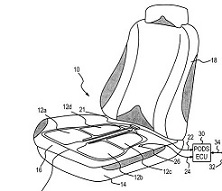Subtitled: Ah, strong am I with the Force, but how do I measure it?
With all due apologies for paraphrasing Yoda, I am trying to measure a force. Fortunately, it's an easier force to measure than midi-chlorians.
When I tutor others in karate, one of the things I emphasize is a focus on the technique behind the basic strikes. Experience has shown that the proper technique can yield a lot more force behind any strike. The problem I run into is that even though a student claims they can "feel" the difference in a strike being more powerful, they often revert back to their incorrect technique because they haven't convinced themselves that the difference is truly there.
I would like to design a system that measures the force behind a strike. In particular, I need to identify some sensor at the point of impact that can be used. National Geographic has done something very similar, but the equipment they use, such as crash test dummies, is prohibitively expensive. Likewise, I don't need the resolution or accuracy provided by that equipment. Whether someone hit with 100 or 101 lbf of force is immaterial. I want to demonstrate when then go from 100 to 200.
What sensor or system could I use in order to measure the force at impact from various karate strikes? Ideally, I could mount the device in a focus mitt, or similar, and be able to attach the pad to an adjustable system so various strikes could be measured.
My principle design constraints are:
- low(er) cost
- repeatable measurements
- range of 0–2,000 lbf
I'm not looking for a complete system design, which would include all the monitoring electronics. I'm just trying to focus on a sensor that can provide a measurable output of some sort, such as voltage.
Also note that I plan on running wires to the device, so I already have an easy way to power the system. I may go wireless at some point, but I would use a battery then and I want this question to remain focused on the sensor itself.






